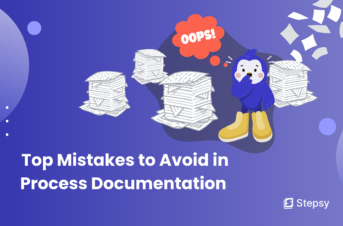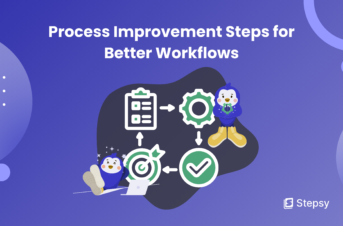The Importance of Process Documentation for Small Businesses
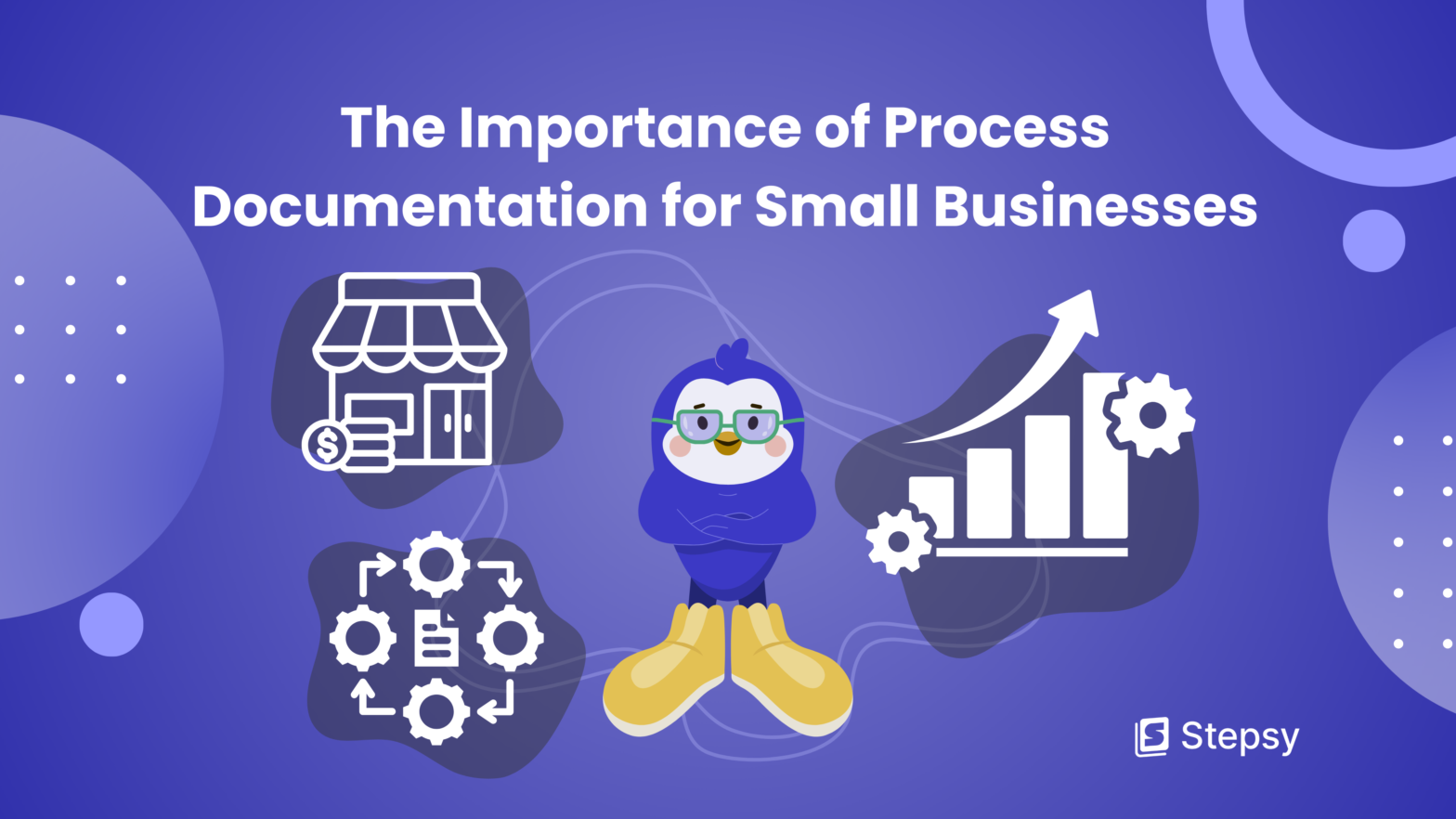
 Iryna Smuk • 26 Jun 2024
Iryna Smuk • 26 Jun 2024
Imagine building a complex piece of furniture without a manual. You have all the pieces and tools, but without clear instructions, the process becomes frustrating and time-consuming. This is what running a small business without process documentation feels like.
So, what is process documentation? Process documentation is a step-by-step document that outlines the procedures and workflows within an organization. These guides serve as a reference point for employees, ensuring everyone understands how to perform their duties correctly and efficiently. It can encompass everything from daily tasks like social media posting to more complex operations like onboarding a new client.
For small businesses, process documentation is particularly important. Unlike larger enterprises, small organizations often function with limited resources and smaller teams, making it essential to optimize every aspect of their operations. By taking the time to write down these processes, companies are creating a centralized knowledge base. As the business grows, new employees will be able to quickly get up to speed, and existing employees to perform their tasks more effectively.
So, let’s delve into the benefits of process documentation, its key components, and implementation strategies for small businesses.
Benefits of Process Documentation
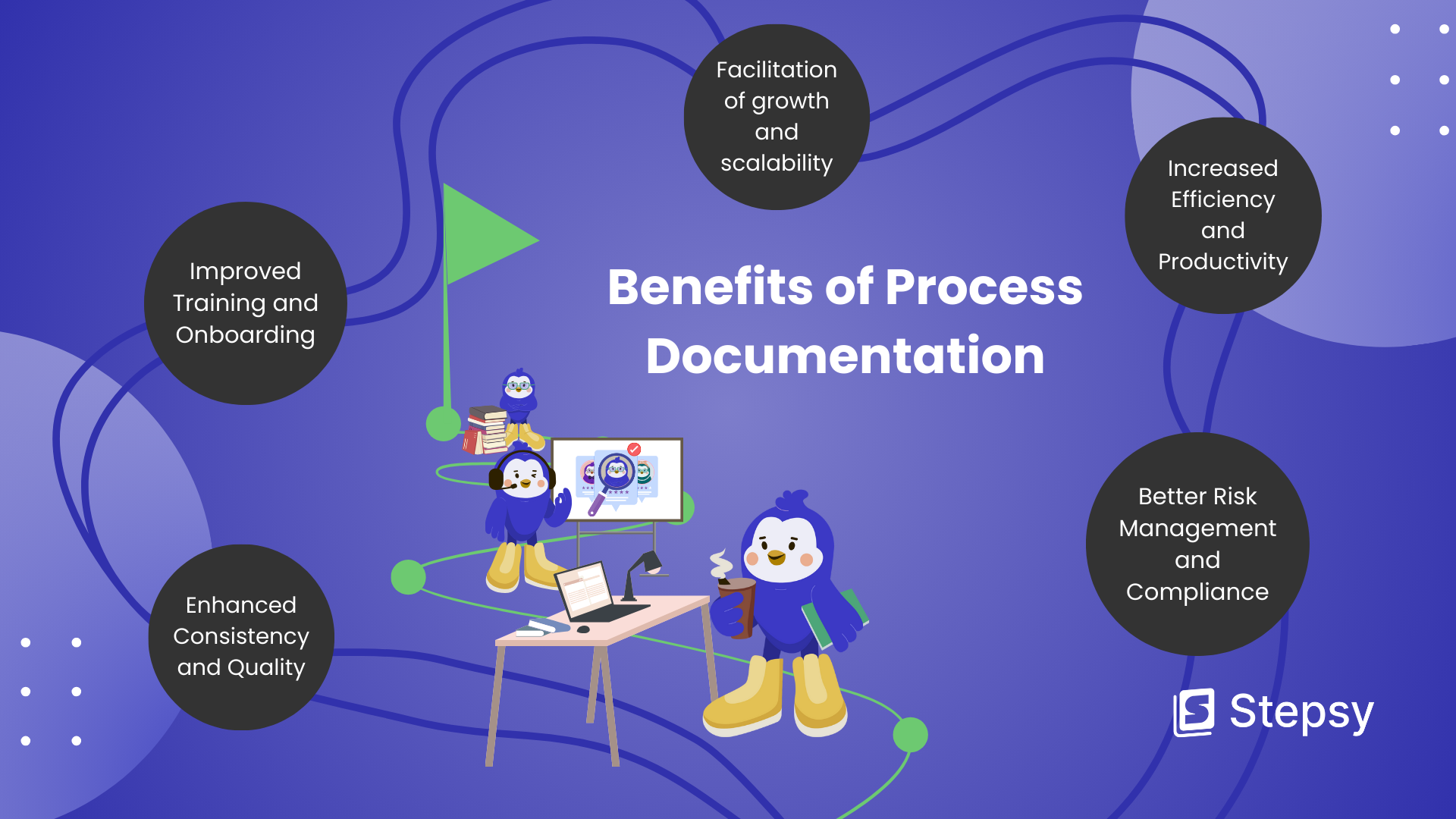
Enhanced Consistency and Quality
One of the most significant advantages of this form of documentation for small businesses is the boost it provides to consistency and quality. When process flow are well-documented, they provide a clear and standardized way of performing tasks.
Imagine a situation where two different employees handle the same customer inquiry. Without documented operations, they might each approach the situation slightly differently, leading to a potentially inconsistent customer experience and the overall reputation of the business. Process documentation eliminates this guesswork.
Furthermore, project management has always included workflow documentation as an important component of maintaining uniformity across the entire organization and a higher level of quality control. When there is a clear picture of how tasks are currently being performed, the identification of areas of improvement, potential bottlenecks, or inefficiencies is much easier.
Improved Training and Onboarding
For small firms, the onboarding of new staff can be a laborious and resource-intensive process. Additionally, it can be difficult for new hires to grasp intricate workflows and fit in with the company’s way of doing things. For this reason, it’s important to have a simple and effective onboarding process.
Robust process documentation acts as a comprehensive guide, detailing each step of newcomers’ responsibilities and the expectations associated with their roles. Additionally, these guides cut down on the time and effort needed for training. It would be more effective for managers and seasoned workers to devote less time to outlining regular chores and more time to strategic endeavors and training new hires on more nuanced aspects of their duties.
Increased Efficiency and Productivity
The significant boost in productivity and efficiency that business process management offers small organizations is another pivotal advantage. Workflow guides make it simple to find and remove unnecessary stages that could be impeding productivity. Businesses are able to pinpoint places where money and effort are being wasted. These kinds of improvements not only save time but also reduce the possibility of mistakes and delays, resulting in operations that run more smoothly and dependably.
On top of that, process documentation helps to eliminate tedious jobs so that staff members can concentrate on higher-value work, such as innovation, customer service, or strategic planning, ultimately driving business growth.
Risk Management and Compliance
The world of small business functions often involves navigating a complex web of regulations and industry standards. Failure to comply with them can lead to severe consequences, such as legal issues or fines. Proper business documentation of processes provides small enterprises with a framework to ensure compliance and mitigate risks effectively.
The process guide is a reference point for understanding and implementing regulatory requirements. With clear instructions in place, employees are less likely to engage in activities that could violate protocols or put the company at risk.
Facilitates Growth and Scalability
Another significant profit of process documentation is its facilitation of growth and scalability for small businesses. As companies grow, they often face the challenge of keeping consistency and efficiency across multiple locations, departments, or teams. That’s when process documentation secure that expansion efforts are sustainable.
If a business opens new branches, expands into new markets, or increases production capacity, with process documents the same standards of quality and efficiency are maintained throughout the organization.
Key Components of Effective Process Documentation
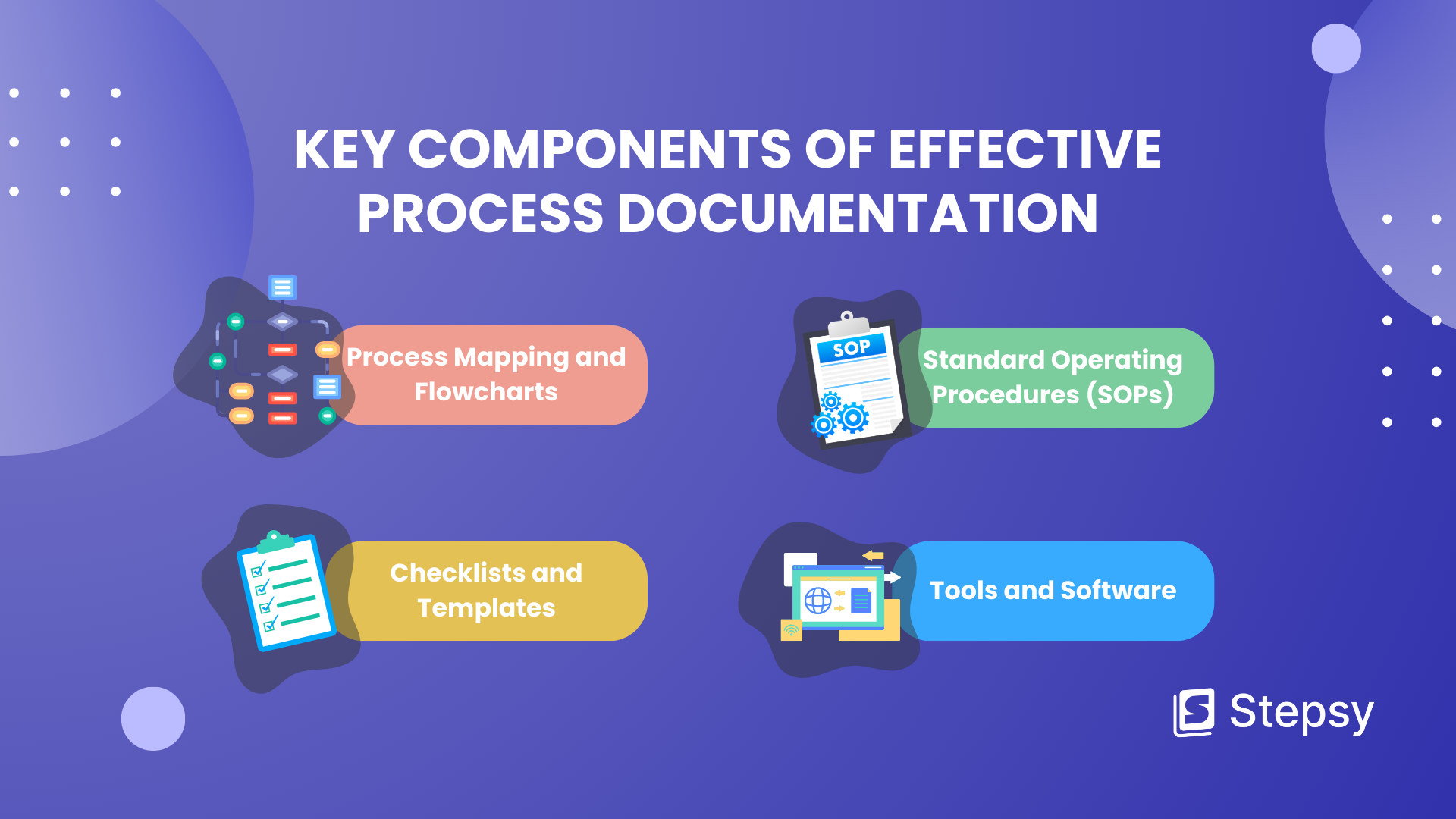
Process Mapping and Flowcharts
One of the most valuable tools for capturing a workflow is process mapping. It involves creating a visual representation of the sequence of steps, typically using flowcharts or diagrams. These visuals break down the process into individual steps, clearly showing the order and any decision points involved. Flowcharts can be easily shared and understood by employees at all levels, fostering better communication and collaboration among team members.
Standard Operating Procedures (SOPs)
Standard Operating Procedures (SOPs) provide detailed, step-by-step instructions to perform a process or specific tasks, ensuring that everyone within the organization follows the same methods. It makes them an indispensable tool for small businesses aiming to optimize their operations flow.
SOPs typically include detailed instructions, the purpose of the task, the required tools or resources, safety precautions, and any other pertinent information necessary for successful completion.
Checklists and Templates
Checklists and templates serve as a visual reminder for employees, securing that no critical steps in a particular task are overlooked. This is particularly important for complex or multistep processes, where missing even a single step can lead to significant issues.
By ticking off each item on a checklist, employees can verify that they have completed every necessary action. Templates, on the other hand, provide a standardized format for recurring tasks and documents.
Tools and Software
In the digital age, leveraging process documentation tools and software is a game-changer for small businesses. They empower organizations to create documentation with ease.
Furthermore, most software solutions offer cloud-based storage, making documents readily accessible to authorized personnel from any device with an internet connection. This facilitates real-time collaboration and eliminates the risk of outdated information lingering in physical documents.

Implementation Strategies for Small Businesses
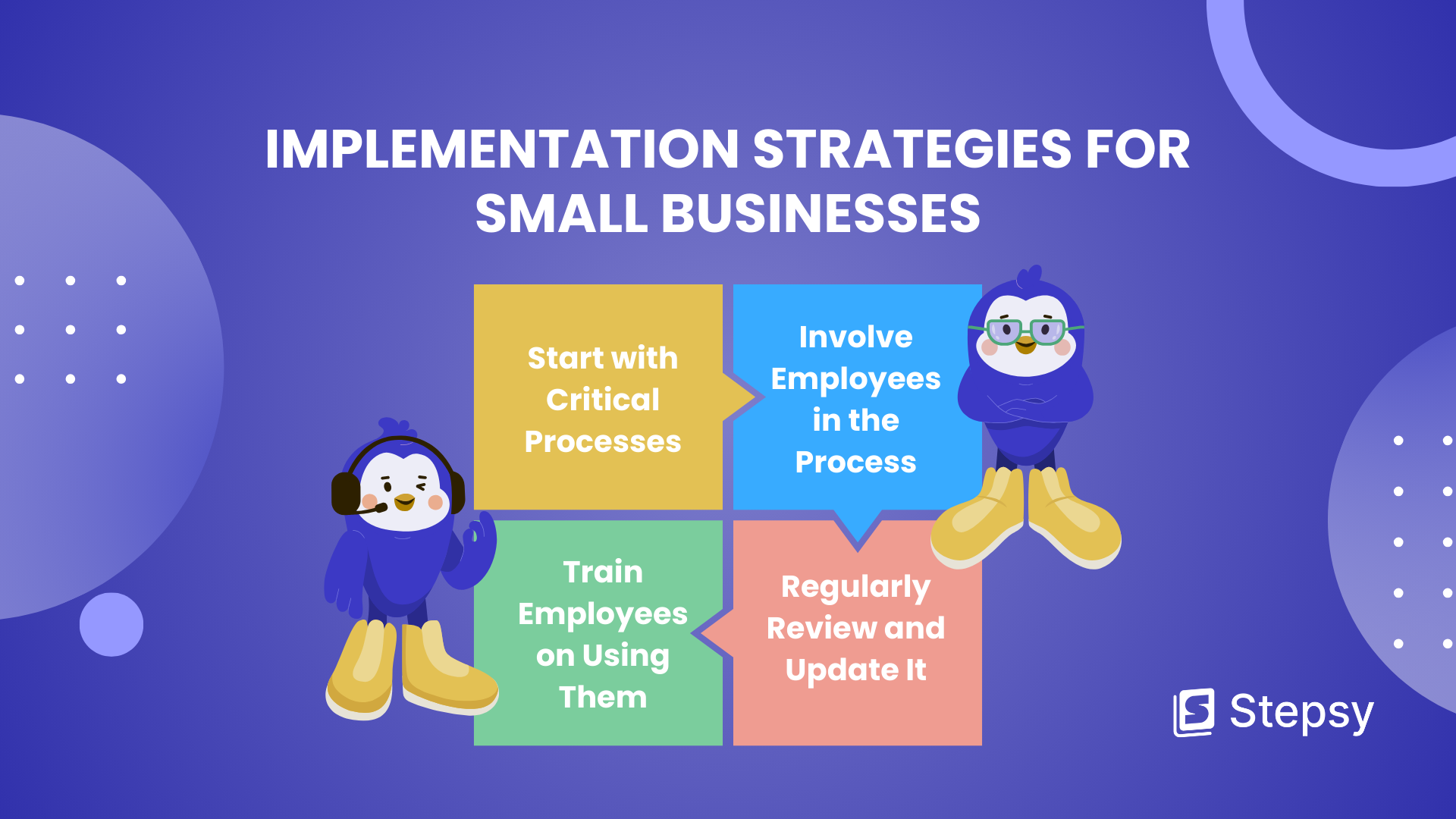
Start with Critical Processes
One best way to document a processes is to start by documenting the most critical and common processes. These are the tasks that are conducted most frequently and are essential to delivering your products or services. Focusing on these high-impact areas ensures that your initial documentation efforts yield significant improvements in efficiency, consistency, and quality.
Involve Employees in the Documentation Process
Employees are the ones who perform the tasks daily and have valuable insights into the intricacies and challenges of each process. That’s why, involving them in the documentation process can ensure that the documentation is accurate, practical, and reflective of real-world operations for small businesses. This collaborative approach also fosters a sense of ownership and buy-in among employees.
Here are some strategies to involve employees in documenting business processes:
- Share the significance and objectives of process documentation.
- Emphasize that their input and expertise are essential for creating process documents.
- Hold collaborative workshops or brainstorming sessions to gather input.
- Encourage open communication and active participation.
- Highlight examples of how their input has directly contributed to the success of the documentation initiative.
Also, the act of capturing or documenting early in the process involves the identification of key stakeholders and subject-matter experts who will contribute to the documentation effort. They should have firsthand experience with the processes being documented.
Once you have gathered input, work together with employees to document each process in a clear, detailed, and user-friendly manner. One great idea is to identify workers who are particularly knowledgeable or enthusiastic about specific processes. Then task them with taking the lead on documenting procedure within their area of expertise.
Regularly Review and Update Business Process Documentation
Over time, as operations, technology, and regulations evolve, it is necessary to regularly review and update process documentation. Organizations should set specific times for analyzing different types of documents, this could be quarterly, bi-annually, or annually. They also can designate a specific individual or team responsible for this process. It is beneficial to encourage input from relevant stakeholders, for instance soliciting feedback from employees, managers, or external consultants. This way, businesses’ documentation maintains its accuracy and usefulness, supporting a culture of continuous improvement and compliance.
To streamline the review and update process, consider utilizing proper documentation tools and software that offer version control and automated update features. After refreshing process documentation, ensure that all changes are clearly communicated to employees.
Train Employees on Using Business Documentation
Even the most precisely crafted documents will not yield their intended benefits if employees are unaware of their existence or do not understand how to use them properly. So, providing thorough training guarantees that everyone in the organization can effectively utilize the documentation.
Businesses can use the following bits of advice to make sure that their teams get the most out of process documents:
- Develop training programs specific to different roles and departments.
- Use different learning styles, such as in-person workshops, online modules, video tutorials, or even quick reference guides.
- Make sure all documentation and training materials are readily accessible to employees.
- Encourage active learning during training sessions.
- Provide ongoing support to employees as they use documentation in their daily work.
Conclusion
Hence, the importance of process documentation for small businesses cannot be overstated. Taking the time to implement effective documentation practices enhances consistency and quality, improves training and onboarding, increases efficiency and productivity, supports risk management and compliance as well as facilitates growth and scalability.
Small businesses are encouraged to begin their process documentation journey by focusing on the most critical and frequently performed processes. Engaging employees in this type of documentation ensures accuracy and practicality, while reviewing and updating documentation regularly keep it relevant and effective. Training employees on how to use and follow the documented processes is important to fully realize the benefits of standardization.
Thus, as the business landscape evolves, having well-documented and up-to-date procedures will enable small or big organizations to adapt quickly to changes, embrace new technologies, and meet emerging regulatory requirements.
